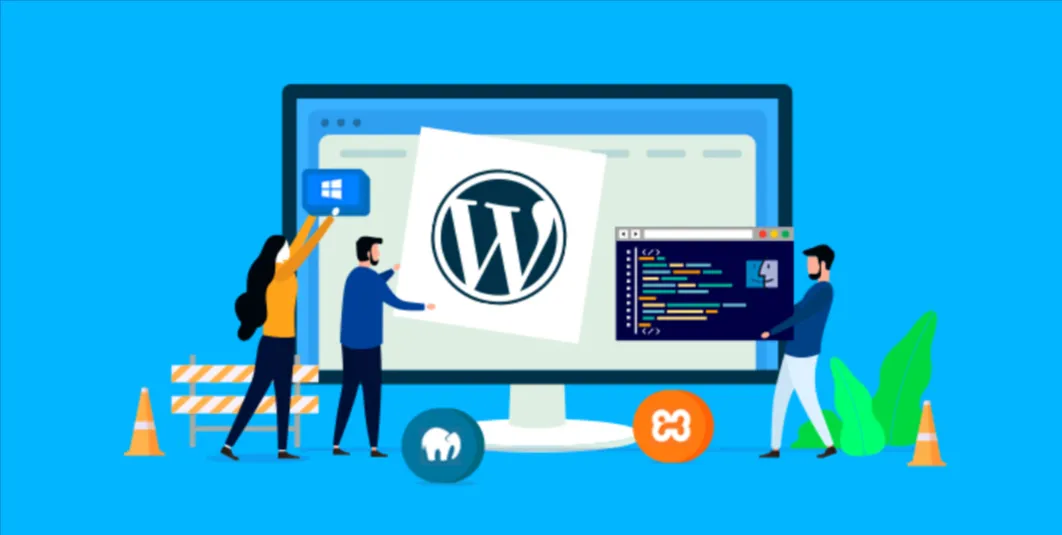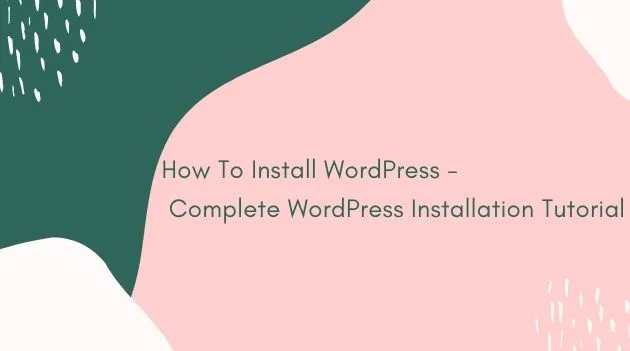WordPress has risen to fame with its easy installation procedure.
It takes pride in powering more than 30% of the websites present on the internet.
It is very easy to create a website using WordPress.

All those companies which provide Webhosting allow easy installation of WordPress.
In the following sections, we bring you to a few simple steps to install WordPress.
Both beginners and advanced users can follow the steps for the installation of WordPress.
For beginners, we have discussed how you can install WordPress on
For the advanced users, we have given descriptions about how you can install WordPress, through FTP.
THINGS YOU NEED TO KNOW BEFORE INSTALLING WORDPRESS:
The two things which you must own before installing WordPress are:
1. DOMAIN NAME
2. The web hosting provider which knows WordPress
You can try using BlueHost for your web hosting provider as it will give you a free domain.
Let we first know how you can install WordPress on your local computer:
You May Also Like:
5 Best WordPress Ecommerce Plugins Compared 5 Best Drag And Drop WordPress Page Builders Compared
INSTALLING WORDPRESS ON YOUR LOCAL COMPUTER:
One of the major reasons for installing WordPress on a local computer has been to test themes or plugins. However, you can install it for your normal use as well.
If you wish to use WordPress for posting your blogs for others to see, then you need not install it on your computer, as it will only allow you to see your site.
If you wish to post blogs online, you must use a Webhosting account for installing WordPress.

For installing WordPress on your local computer you can follow the following steps:
1. Download and setup WAMP
2. If you are using a mac, then you need to install and setup MAMP
INSTALLING WORDPRESS THROUGH FTP:
For installing WordPress manually through FTP, you need to have an FTP client.
Follow the steps below to manually install WordPress:
1. Download latest version of WordPress
2. The package will be available as a zip file, so you first need to unzip the file. You will now have all the files which you need to upload on your server
3. Now you need to connect your FTP server with the hosting server. Now use the client to upload the files on your server.
4. Upload your files to your website’s root directory if you wish to install WordPress on your root domain name.
5. If you wish to install it on a subfolder then, use folder/public-html/blog/.
6. Now create a database using your hosting’s control panel or by MySQL.
7. Now provide a username and password for MySQL
8. Now add the user which you have created above to the database to give it all the permissions required for performing actions on it.
9. WordPress will now give you a list of installation instructions asking you to mention your username, MYSQL host information along with a form. This form will ask you to submit information about the database.
10. Now submit the form
11. Next Click on the ‘run the install’ button.
12. Setup your WordPress account
13. The last step is to click on the install button for installing it.
These steps could be used by the intermediate users to install WordPress, a beginner can also go for Webhosting providers for installing WordPress.
These providers are:
- BlueHost
- HostGator
- SiteGround
- WP Engine
A beginner can also use auto-installing scripts like:
- Softaculous
- Quick install
- Fantastico
You can also install WordPress in your language as well as on multisite networks.
Once you have installed WordPress, start working on on-site development. You can get started with the following things:
1. Choose a theme for your WordPress
You can use many themes for making your WordPress site looks more appealing. The display is controlled by themes. There are many default themes present in WordPress but you can also go for more advanced ones.
2. Install and use various PLUGINS AVAILABLE FOR MAKING WORDPRESS more user-friendly and appealing
You can choose from various plugins to add more functionality to your WordPress
3. Start learning different aspects of WordPress
You can learn more about working on WordPress by going through resources available online.
CONCLUSION:
You can install WordPress by following the steps given above or by using the different hosting provider as mentioned.









Comments